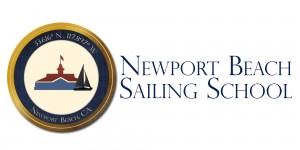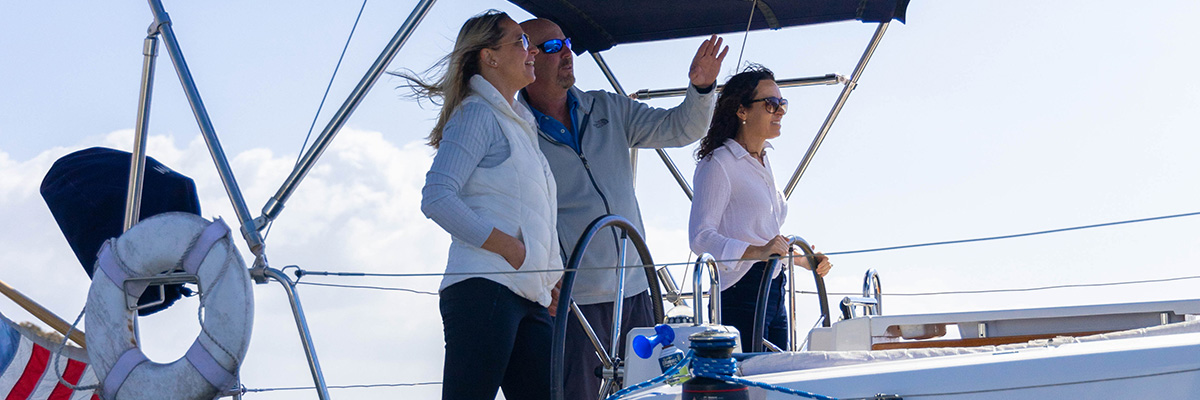3 Day Learn to Sail Vacation – ASA 104 and 114 Combo, Bareboat Cruising Certification and Cruising Catamaran
Course Pricing
This is a 3-day/2-night private live-aboard course. You will depart for Catalina on the morning of the first day and return to Newport Beach the afternoon of the third day. You will not be sharing the accommodations on the yacht with other students who you do not know.
- Private Course 1 Student: $8900 total. A private course just for you, based on your schedule.
Click here to tell us when you would like to start.
- Private Course 2 Students: $9200 total. A private course for you and someone you know, based on your schedule.
Click here to tell us when you would like to start.
- Private Course 3 Students: $9500 total. A private course for you and two people who you know, based on your schedule.
Click here to tell us when you would like to start.
- Private Course 4 Students: $9795 total. A private course for you and three people who you know, based on your schedule.
Click here to tell us when you would like to start.
Information about the Course
104 Overview
In this course, you will learn how to sail a sloop-rigged, auxiliary powered 30′-45′ sailboat during a multi-day cruise, in inland/coastal waters, in moderate/heavy wind and sea conditions. Learn about provisioning, boat systems, auxiliary engines, advanced sail trim, coastal navigation, anchoring / mooring, docking, emergency operations, weather, and more.
For a full list of all 55 topics (knowledge and skills), plus knots that will be covered, click below.
114 Overview
In this course, you will learn to skipper an auxiliary-powered sailing cruising catamaran during a multi-day live aboard cruise, in coastal waters, in moderate to heavy winds (up to 30 knots) and sea conditions. Learn catamaran structure, components and features, performance under sail and power, boat systems, seamanship and safety, heavy weather operation, and emergency response.
For a full list of all 57 topics (knowledge and skills), plus knots that will be covered click below.
Prerequisite – ASA 101 and 103
Boat utilized and description – 2016 Lagoon 400 S2 or 2017 Lagoon 450
This is an attractive 40 or 45 foot sailing catamaran with 3 cabins and 3 bathrooms. This is a top of the line cruising model with all the comforts and features to make learning fun and safe. Features include: Roller furling sails, dodger and bimini, anchor windlass, autopilot, radar, GPS, and color chartplotter.
Boat location – The Vue Marina, Newport Beach, CA
The boat will be docked at the Vue Marina on the Balboa Peninsula. This marina has some of the best facilities and is one of the best destinations in Southern California. Some of the features that make this a great location are:
- Free parking
- Bathrooms
- Several restaurants within walking distance
- Coffee shops within walking distance
- Large grocery store, 3 blocks away – Pavilions
- John Wayne (SNA) Airport, 7 miles away.
- Balboa Island ferry within a mile
- Newport Pier a block away.
- Art Museums of Laguna Beach within 12 miles
- Disneyland, 20 miles away
- Numerous hotels and resorts within just a few miles
- The famed Balboa Bay Club, where John Wayne use to hang out, less than a mile from the marina
What’s included –
- ASA 104 & 114 textbooks “Bareboat Cruising Made Easy and Cruising Catamarans Made Easy ”
- Fuel, insurance, and safety gear (including life jackets)
- Mooring fees in Catalina
- Dinghy – 10’ with Honda 2.3HP outboard motor
- High quality bedding (duvet in Fall, Winter and Spring; cotton blanket in Summer) along with fitted sheets and your choice of pillows (exact selection based on availability)
- Comfortable, upgraded mattresses. If you are going to “live” on a boat, you should be comfortable!
- Bath towel, hand towel, beach towel, and dish towels
- Fully equipped galley with refrigerator, sink, oven, stove, pots, pans, dishes, silverware, cooking utensils, glasses, cups and coffee mugs. BBQ outside in the cockpit
- Hot water in the sinks and showers. “No cold showers for this sailor, thank you very much!”
- Stereo with speakers inside the cabin and outside in the cockpit
- The boat is also stocked with 15 disposable items for your convenience. (Click here for a list)
- Cleaning and washing after your stay. It wouldn’t be a vacation if you had to clean up!
Cost Matrix to Reschedule a Class

